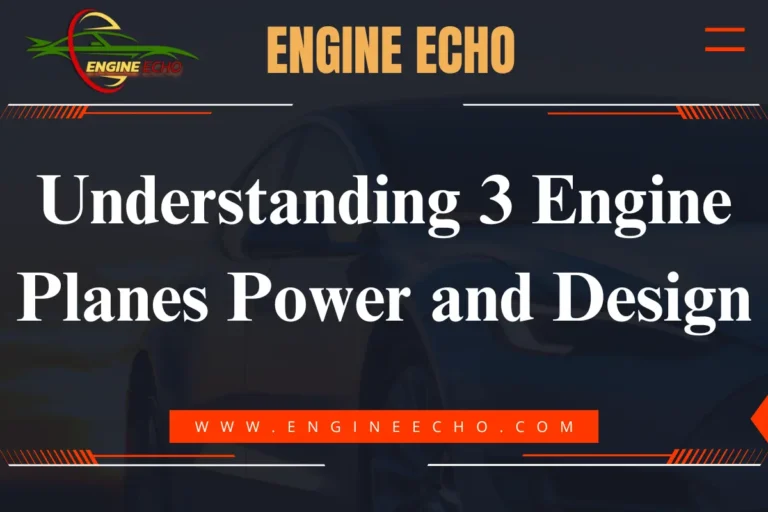Cars with W Engine: Powerful and Rare Choices

Key Takeaways
- Understanding W Engines: W engines are something special—a unique design that stands out from the crowd with a rich history of innovation and exclusivity.
- Notable Models: Iconic cars like the Volkswagen Passat W8, Bentley Continental GT, and Bugatti Chiron are prime examples of the power and rarity W engines offer.
- Performance Insights: These engines aren’t just about power; they’re compact, efficient, and play a key role in some of the most luxurious and high-performance cars out there.
- Future and Collectibility: W engines are getting rarer by the day, making them a niche market with serious potential for future collectibility.
Introduction to W Engines
W engines? Now, those are something special. They’re like the hidden gems of the car world—packed with innovation and power that you don’t see every day. While most people talk about V engines, W engines take a different approach, and that’s exactly what makes them so fascinating. Developed mainly by the Volkswagen Group, these engines have powered some of the most prestigious and high-performing cars on the planet.
What is a W Engine?
W engines aren’t just another type of engine—they’re what you get when engineers decide to think a little differently, and I love that about them. Instead of the usual V-shaped configuration with two banks of cylinders, W engines have three or four banks arranged in a “W” pattern. This setup allows more cylinders to fit into a smaller space, making the engine both powerful and compact. It’s this blend of power and space-saving design that really sets W engines apart from the pack.
History of W Engines
The concept of the W engine has been around for a while, but it wasn’t until the late ’90s that things really started to heat up. Volkswagen was the first to bring W engines into the spotlight with the W8 engine in the Passat back in 2001. And let’s be honest, this wasn’t just some engineering experiment—it was a bold move. Then came the W12 and W16 engines, and suddenly, these engines were powering some of the fastest and most luxurious cars in the world.
Types of W Engines
W8 Engine
The W8 engine might not be the most famous, but it’s definitely a cool piece of automotive history. Launched in the early 2000s, this eight-cylinder engine packed a 4.0-liter displacement into the Volkswagen Passat, turning a family sedan into something truly special. I remember the first time I saw a Passat W8—who would have thought a mid-sized sedan could deliver that kind of performance? It’s practical, sure, but it’s also a blast to drive, making it a standout choice for anyone looking for something different.
W12 Engine
Now, the W12 engine is where things get really interesting. This 12-cylinder marvel combines two narrow-angle V6 engines on a common crankshaft, creating something truly unique. When I first got behind the wheel of a Bentley Continental GT with its W12 engine, I knew right away that this wasn’t just another car—it was an experience. The way this engine delivers power is just so smooth, so effortless. It’s the perfect match for a luxury car that’s all about blending performance with comfort.
W16 Engine
And then there’s the W16 engine—the king of them all. With 16 cylinders arranged in that signature W configuration, this engine delivers jaw-dropping power. If you ever find yourself near a Bugatti Veyron or Chiron, do yourself a favor and take a closer look. These cars aren’t just fast—they’re in a league of their own, smashing records left and right. The W16 is a big part of what makes these cars legends in the automotive world.
Volkswagen Group: Pioneers of W Engines
When it comes to W engines, Volkswagen Group is the name you need to know. Their commitment to pushing the boundaries of automotive engineering is truly something to admire.
Role in Developing W Engines
Volkswagen started playing around with W engines back in the late ’90s. Their mission? To pack serious power into a smaller, more compact engine. The W8 was their first big success, and it set the stage for everything that came after, including the W12 and W16 engines. It’s this kind of innovative thinking that keeps Volkswagen at the cutting edge of car design.
Volkswagen’s W8 Engine
The W8 engine may not have been a runaway commercial success, but it’s still a fascinating piece of automotive history. I’ve had the pleasure of driving a Passat W8, and let me tell you, the power and smoothness of that engine are something special. It’s a car that didn’t get the attention it deserved at the time, but today, it’s a hidden gem that enthusiasts should definitely keep an eye on.
Bentley’s Use of W12 Engines
Bentley knows how to do luxury, and the W12 engine is a big part of that. The Continental GT, in particular, showcases this engine at its best. Driving the Continental GT with its W12 engine? That’s not just getting behind the wheel—it’s an experience you feel in your bones. It’s the perfect blend of elegance and muscle, something that only Bentley could pull off.
Bugatti’s Iconic W16 Engines
And then there’s Bugatti. The W16 engine in the Veyron and Chiron is nothing short of legendary. These cars have set speed records that are unlikely to be broken anytime soon, all thanks to the engineering brilliance of the W16. If you’re a fan of hypercars, the W16 is the engine you dream about.
Notable Cars with W Engines
Volkswagen Passat W8
The Volkswagen Passat W8 is a car that might surprise you. It’s not often that a family sedan features a W engine, but the Passat W8 did just that. I’d recommend this car to anyone looking for something a little different. It’s a car that combines everyday practicality with the kind of engineering that you usually only find in much more expensive vehicles. Plus, its rarity makes it a great conversation starter.
Bentley Continental GT
If luxury and performance are what you’re after, the Bentley Continental GT with its W12 engine is the car for you. The W12 engine provides an effortless surge of power, making every drive a joy. I’ve always thought of the Continental GT as the perfect blend of elegance and muscle—something that’s not easy to achieve, but Bentley has done it with style.
Bugatti Veyron and Chiron
The Bugatti Veyron and Chiron are in a league of their own. These are cars that push the limits of what we think is possible in terms of speed and performance. The W16 engine is at the heart of these achievements. If you’re looking for the ultimate driving experience, and I mean the ultimate, the Bugatti Veyron or Chiron is where you’ll find it.
Performance and Engineering Excellence
Power Output Comparison
W engines are known for their high power output, and rightly so. The W8 engine produces around 270 horsepower, the W12 can generate up to 626 horsepower, and the W16 engine delivers an astonishing 1,479 horsepower in the Bugatti Chiron. It’s this kind of power that makes these engines stand out. I’ve always been impressed by how much power these engines can produce without requiring a massive engine block.
Advantages of W Engines
The compact design of W engines is one of their biggest advantages. By arranging the cylinders in a W configuration, more power can be packed into a smaller space. This makes W engines ideal for high-performance vehicles where every inch counts. In my experience, this compactness doesn’t just save space—it’s a key part of what makes these engines so special.
Challenges in W Engine Development
Of course, W engines come with their own set of challenges. They’re complex and expensive to produce, which is why you don’t see them in every car. But for those of us who appreciate automotive engineering, these challenges are part of what makes W engines so fascinating. The fact that they’re difficult to make only adds to their allure.
W Engines in Motorsports
Use in Racing
W engines have also made their mark in motorsports, where their high power output and compact design are highly valued. Whether it’s endurance racing or straight-line speed trials, W engines have shown that they can compete with the best. Watching a car with a W engine tear up the track is a sight to behold, and it’s a reminder of just how versatile these engines are.
Performance on the Track
On the track, W engines have proven themselves time and again. Cars like the Bugatti Veyron, with its W16 engine, have set speed records that still stand today. I’ve always been in awe of how these engines perform under the extreme conditions of racing. It’s a testament to the engineering that goes into them.
W Engines vs. V Engines
Design Differences
The main difference between W engines and V engines is in their cylinder arrangement. While V engines have two banks of cylinders, W engines have three or four. This allows W engines to be more compact while still offering high power outputs. Personally, I find this design to be one of the most interesting aspects of W engines. It’s a different way of solving the problem of how to generate more power without increasing engine size.
Performance Comparison
In terms of performance, W engines tend to offer more power and torque than their V engine counterparts, especially in the high-end models like the W12 and W16. This added performance comes with added complexity, but for those who demand the best, it’s worth it. I’ve driven both W and V engine cars, and while V engines are great, there’s something about the smooth, effortless power of a W engine that’s hard to beat.
Market Presence
W engines are far less common than V engines, and that’s part of their appeal. They’re typically found only in high-end luxury and performance cars, making them rare and desirable. If you’re someone who values rarity and exclusivity, W engines are definitely worth considering.
The Future of W Engines
Potential Developments
As we move towards a future dominated by electrification, the future of W engines is uncertain. However, I wouldn’t count them out just yet. There’s potential for hybrid versions of W engines that could combine the best of both worlds—traditional internal combustion and modern electric power. It’s an exciting prospect, and I’m eager to see what the future holds for these engines.
Sustainability Concerns
One of the biggest challenges facing W engines is their fuel efficiency—or lack thereof. In today’s environmentally conscious world, this is a significant drawback. However, I believe that with the right innovations, we could see more eco-friendly versions of W engines in the future. It’s a challenge, but one that I think is worth tackling.
Market Forecast
Despite these challenges, I believe there will always be a niche market for W engines. Their rarity and performance make them highly desirable, particularly among collectors and enthusiasts. I’d recommend keeping an eye on W engine cars if you’re a collector. They may be rare, but that’s exactly what makes them valuable.
Case Studies of Iconic W Engine Cars
Volkswagen Passat W8
The Volkswagen Passat W8 is a car that might not have been a commercial success, but it’s definitely a collector’s item. I’d recommend this car to anyone who values rarity and uniqueness. It’s not just a car; it’s a piece of automotive history. Plus, it’s a joy to drive—there’s something about the smoothness of the W8 engine that just feels right.
Bentley Continental GT
The Bentley Continental GT is the epitome of luxury and performance, and the W12 engine plays a big part in that. If you’re looking for a car that offers both speed and comfort, this is the one to choose. I’ve driven the Continental GT, and every time, it reminds me why Bentley is such a respected name in the automotive world.
Bugatti Chiron
The Bugatti Chiron is in a league of its own. With its W16 engine, it’s not just a car—it’s a statement. If you’re a fan of speed, this is the car you want. The Chiron has set new standards for what’s possible in a hypercar, and I can’t help but admire the engineering that went into creating this masterpiece.
Collectibility and Rarity of W Engine Cars
Market Value and Rarity
Cars with W engines are rare, and their market value reflects that. Whether it’s the Passat W8, the Bentley Continental GT, or the Bugatti Chiron, these cars are more than just vehicles—they’re collectibles. If you’re in the market for something unique, these are cars worth considering.
Investment Potential
Investing in a car with a W engine can be a smart move, especially if you’re a collector. The rarity and performance of these cars make them highly desirable, and I believe their value will only increase over time. It’s not just about owning a car; it’s about owning a piece of automotive history.
Notable Auctions
Some W engine cars have fetched high prices at auction, particularly models like the Bugatti Veyron and Chiron. These aren’t just cars—they’re pieces of art. If you’re lucky enough to own one, it’s something you should cherish.
Maintenance and Ownership of W Engine Cars
Maintenance Challenges
Owning a car with a W engine is a rewarding experience, but it’s not without its challenges. These engines are complex and can be expensive to maintain. I remember the time I had to source a part for a W8 engine—it wasn’t easy, but the satisfaction of keeping such a unique machine running made it all worth it.
Parts Availability
Finding parts for W engines can be tricky due to their rarity. However, for those of us who appreciate the engineering behind these engines, it’s a challenge worth accepting. There’s something about maintaining a W engine car that feels like you’re preserving a piece of history.
Owner Experiences
Despite the challenges, many owners of W engine cars report high satisfaction. I’ve spoken to a few fellow enthusiasts, and the consensus is clear: these cars are worth the effort. The performance and exclusivity of W engine cars make them a joy to own, and for many, the benefits far outweigh the difficulties.
Conclusion
W engines really are something else. They’ve got this mix of power, performance, and rarity that you just don’t come across every day. Whether it’s the Volkswagen Passat W8, the Bentley Continental GT, or the Bugatti Chiron, these engines have powered some of the most iconic and desirable cars ever made. Despite the challenges of ownership and the uncertain future of internal combustion engines, I believe W engines will continue to captivate car enthusiasts and collectors alike. They’re not just engines—they’re a testament to what’s possible when engineering and ambition meet.
Frequently Asked Questions (FAQs)
What makes a W engine different from a V engine?
The W engine differs from the V engine in its cylinder arrangement. While V engines have two banks of cylinders, W engines have three or four banks, allowing for more cylinders in a more compact space.
Why are W engines less common?
W engines are less common due to their complexity and cost. They are typically found only in high-end luxury and performance cars, making them rare compared to V engines.
What are the main challenges in maintaining a W engine?
The main challenges include the complexity of the engine, the difficulty in finding parts, and the need for specialized mechanics, all of which contribute to higher maintenance costs.
Which car brands are most associated with W engines?
The Volkswagen Group is most associated with W engines, with brands like Volkswagen, Bentley, and Bugatti leading the development and use of these engines in their vehicles.
Thanks for checking out this article on EngineEcho.com! Hope you found this article: "Cars with W Engine: Powerful and Rare Choices" helpful! If you liked it and want to dive into more car engine topics, head over to our homepage. There's always something new to discover in the world of engines. Enjoy your reading journey!
Check out our previous article: RC Cars with Engine: Top Gas-Powered Models






